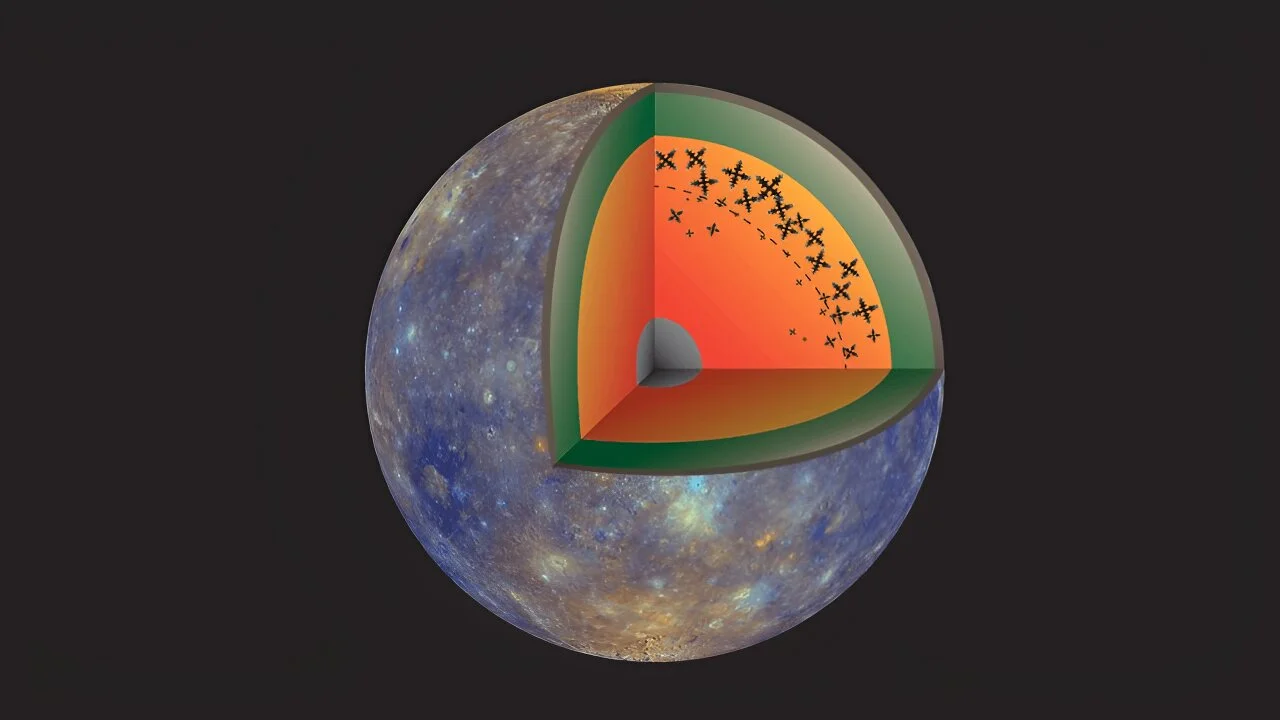“Iron snow” tides may cause magnetic fields to emerge
- January 3, 2024
- 0
Just as snow crystals form in the upper atmosphere and then fall and melt at lower, warmer altitudes, scientists believe that a phenomenon called iron snow occurs in
Just as snow crystals form in the upper atmosphere and then fall and melt at lower, warmer altitudes, scientists believe that a phenomenon called iron snow occurs in

Just as snow crystals form in the upper atmosphere and then fall and melt at lower, warmer altitudes, scientists believe that a phenomenon called iron snow occurs in the molten iron cores of some planetary bodies. Cooling near the core-mantle interface forms iron crystals that melt as they fall deeper into the hot core. This motion can create magnetic fields on some small bodies such as Mercury and Jupiter’s moon Ganymede, but their dynamics are not fully understood.
In a first-of-its-kind experiment, Ludovic Huguet and a team of researchers modeled iron snow using water ice in the laboratory and discovered different crystal formation and dormancy cycles. The predicted results for planetary bodies could mean that planets’ magnetic fields come and go periodically as their dynamos turn on and off. The article was published in the magazine Geophysical Research Letters.
The researchers’ simple experimental setup involved a bottom-cooled water tank with a layer of salt water at the bottom to prevent ice crystals from sticking. As the lower layers of freshwater cooled, they produced ice crystals that rose and melted as they reached warmer water. This, together with the latent heat created by crystal formation, created a reverse flow that eventually heated the lower layers of water and stopped the formation of ice crystals. Once the water was cool enough again, the process started again.
In their experiments, the researchers found that these “bursts” of crystal formation occurred approximately every 1,400 seconds. This rate was controlled with some variability by heat diffusion in the cooling layer, probably due to inhomogeneity of crystal nucleation.
Their models showed that planetary bodies with molten iron cores could undergo similar bursts of iron snow formation, creating internal fluid flows in the molten iron and driving a periodic dynamo that generates the planetary magnetic field. Thus, magnetic fields in these objects can appear and disappear at semi-regular intervals.
The authors note that several questions still remain about this process, including how much supercooling is required for crystal formation, how the iron snow particles move collectively, and how these movements affect large-scale flows within the core.
Source: Port Altele
As an experienced journalist and author, Mary has been reporting on the latest news and trends for over 5 years. With a passion for uncovering the stories behind the headlines, Mary has earned a reputation as a trusted voice in the world of journalism. Her writing style is insightful, engaging and thought-provoking, as she takes a deep dive into the most pressing issues of our time.